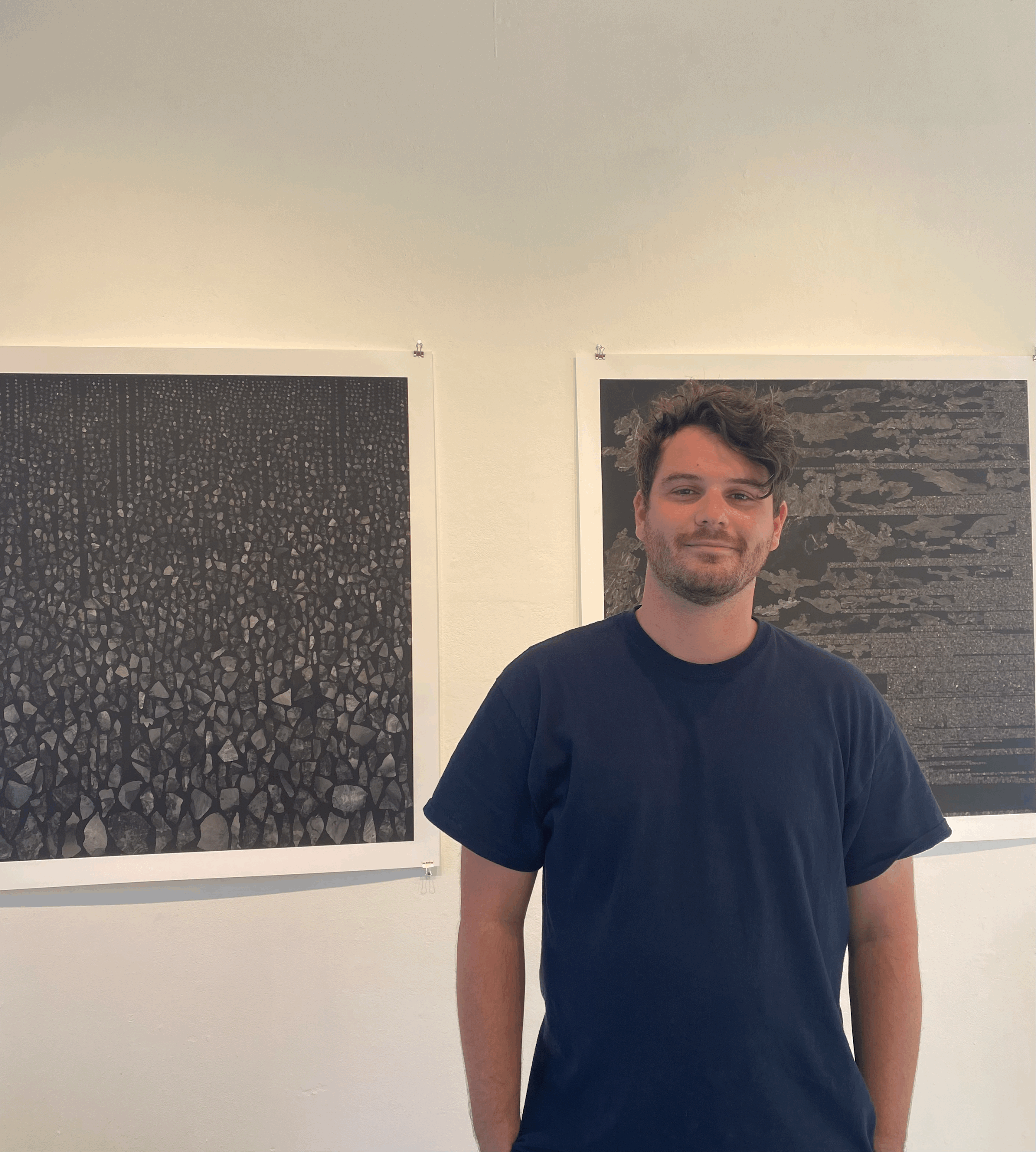By Katie Posey
UC Santa Barbara honors Art student Andrew Wharton merges the virtual world with the physical world in his latest work “Virtual Shadows,” which uses both digital objects and organic materials and was on display last week at the Glassbox Gallery on campus.
In an interview at the show’s closing reception, Wharton said the pandemic prompted a transition in his work from physical to digital when he began to spend much more time at home on his computer.
“Now that we’re back in the physical space, I want to make art that exists in the gallery, not just on screen,” he said. “It led to an exploration. How do I take those skills that I learned over the past year and move them into the real world?”
UC Santa Barbara honors Art student Andrew Wharton at the closing reception of his exhibit “Virtual Shadows.”
Wharton began to explore what it means to merge technology and nature in the show, and used digital aspects as well as physical objects, in the form of 3D printed objects.
He felt inspired to use simple, organic materials, such as a rock and a log because they undergo physical changes over time, such as decay and erosion. He then imitated this phenomenon by digitizing a rock and slowly reducing the points recognized by the computer, making a digital model of the degrading process, to replicate the natural process.
Wharton then completed the cycle by taking a digital form of the actual log and placing it back in nature, playing with the idea of taking an object out of context both physically and metaphorically. Throughout the work, he employed the notion of bringing physical objects into the digital realm as well as taking digital entities and moving them into physical space to present “virtual objecthood.”
Wharton’s 3D model of a rock, right, was displayed next to the original, offering viewers insight into how a computer understands an object.
At the physical show last week, both a 3D model of the rock and a 3D model of the log were presented next to the originals. Rocks and sticks were some of the first tools mankind used, Wharton said. “With the 3D printer, I thought it would be interesting to combine a cutting-edge tool with the original tools.” Through the texture of the models, we can better comprehend how computers understand objects, he added.
Katie Posey is a third year UC Santa Barbara student majoring in Communication. She is a Web and Social Media Intern for the Division of Humanities and Fine Arts.



